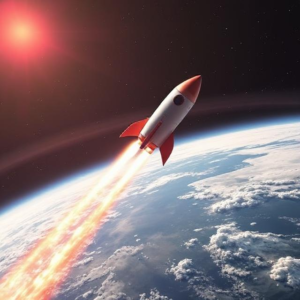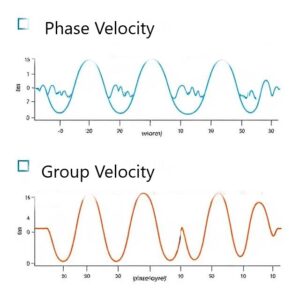1. Instantaneous Speed
-
- Instantaneous speed is how fast something is moving at a specific moment in time.
- Think about when you’re driving a car: the speedometer shows how fast you’re going right now. That’s your instantaneous speed.

- Formula:
- The instantaneous speed can be derived from the formula for speed:
Where:
represents the rate of change of distance with respect to time (i.e., speed).
- Example:
- If you’re driving at 60 miles per hour for some time, but you suddenly glance at your speedometer and it shows 45 miles per hour, then your instantaneous speed at that moment is 45 miles per hour.
2. Instantaneous Velocity
-
- Instantaneous velocity is very similar to instantaneous speed, but with an extra detail: it tells you both the speed and the direction you’re moving.
- Velocity is a vector quantity, which means it has both magnitude (how fast) and direction.
- Formula:
Where:
is the instantaneous velocity vector at time
.
is the position vector.
is the derivative of the position with respect to time, giving the velocity at a specific moment.
- Example:
- If you’re driving north at 60 miles per hour, your instantaneous velocity is 60 miles per hour to the north.
- If you’re turning left and speeding up, your instantaneous velocity changes as both your speed and direction change.
3. Relative Velocity
-
- Relative velocity tells you how fast one object is moving compared to another object.
- Imagine you’re on a moving train and you throw a ball. The speed of the ball relative to you is different from its speed relative to someone standing outside the train.
- Formula:
Where:
is the relative velocity between the two objects.
and
are the velocities of the two objects.
- Example:
- If you’re in a car moving at 50 miles per hour and someone else is in a car moving at 30 miles per hour in the same direction, the relative velocity between the two cars is 20 miles per hour (50 mph – 30 mph). But if the other car is moving in the opposite direction, the relative velocity is 80 miles per hour (50 mph + 30 mph).
4. Initial Velocity
-
- Initial velocity is the velocity of an object at the very beginning of its motion.
- It tells you the speed and direction of the object when it starts moving.
- Formula:
- The initial velocity is simply the velocity of the object at the start:
Where:
is the initial velocity.
is the velocity of the object at time
.
- Example:
- If a car is at rest and starts moving, its initial velocity is zero.
- If the car starts moving with a speed of 20 miles per hour to the east, its initial velocity is 20 miles per hour to the east.
Summary of Formulas:
- Instantaneous Speed:
- Instantaneous Speed is how fast something is moving at a particular moment, without direction.
- Instantaneous Velocity:
- Instantaneous Velocity is the speed and direction of an object at a particular moment.
- Relative Velocity:
- Relative Velocity is how fast one object is moving compared to another.
- Initial Velocity:
- Initial Velocity is the velocity of an object when it first starts moving.











